By Christopher Miskimon
The morning sun arose late in the North Atlantic Ocean on October 4, 1943. In the far northern latitudes 100 miles off the coast of Norway, the aircraft carrier USS Ranger (CV-4) slid smoothly through the icy waters, turning into the wind to launch its aircraft.
The first aircraft lifted off from the flight deck at 7:05 a.m. Thirty minutes later the entire strike group of 20 SBD-5 Dauntless dive bombers and eight F4F-4 Wildcat fighters was in the air and quickly assumed formation. Five minutes later, strike group leader, Lt. Cdr. George Klinsmann, led the formation east at 135 knots. The aircraft descended toward the sea, flying no more than 100 feet above the surface to avoid detection.
Ahead of them lay the long Norwegian coastline, an area known as the “Leads.” The Leads is a waterway between the shore and the numerous small islands that dot the coast of the Scandinavian country. Vessels navigating the coastline use the Leads to transport cargo the length of Norway.
Since the Germans invaded Norway in 1940, they had used the Leads to move troops around the country. They also used the passageway to transport iron ore from Narvik in northern Norway to Germany.
The Allies found it challenging to strike German shipping in the Leads. This was because underwater obstacles made it difficult for Allied submarines to operate there. In addition, the Leads were just barely within the maximum range of Allied land-based aircraft flying from Scotland. Yet an air strike launched from an Allied carrier would be close enough to allow the attacking planes to spend ample time over their targets before withdrawing in an unexpected direction to avoid pursuit by German aircraft.
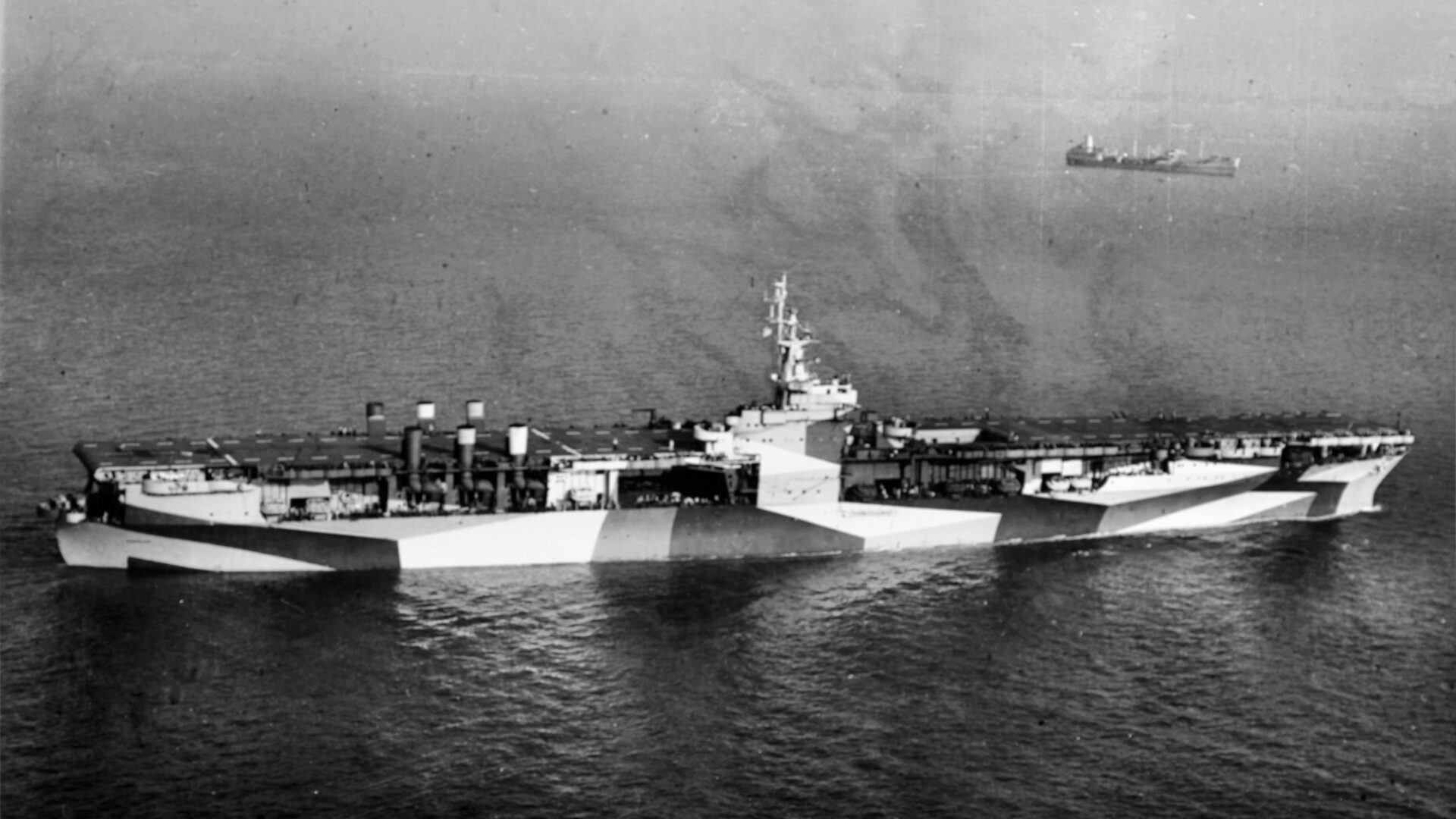
The Ranger’s strike against Norwegian targets is significant because it was the only air attack made against the European mainland by an American fleet carrier during World War II. The ship, which was the U.S. Navy’s first vessel built from the keel up as an aircraft carrier, was built in Newport News, Virginia, in September 1931 and commissioned nearly three years later in June 1934. The ship spent the rest of the 1930s conducting training and participating in fleet exercises until the very end of the decade.
The Ranger was destined to spend its entire combat service during World War II in the Atlantic theater. The U.S. Navy deployed the carrier to the Atlantic Ocean, rather than the Pacific Ocean where it might have served alongside the Wasp, Lexington, and Yorktown class ships arrayed against the Imperial Japanese Navy. The Navy’s decision to keep it in the Atlantic stemmed from the ship’s speed and armament, which was considered too slow and too light, respectively, to survive in the Pacific Theater, even though carriers were desperately needed there.
When President Franklin D. Roosevelt declared a security zone in the Western Atlantic a few days after the Germans invaded Poland, he also established a Neutrality Patrol, ostensibly to protect neutral shipping and keep the war away from American shores. While it did those things, the patrol also served to locate German ships and submarines and pass their locations along to the Royal Navy. The Ranger joined the Neutrality Patrol, sailing out of Barbados and monitoring the shipping lanes as far north as Newfoundland. After the Japanese attack on Pearl Harbor, the Ranger patrolled in the South Atlantic.
In May 1942, the ship delivered a load of 68 Army P-40 fighter planes to Accra in the British West African crown colony of the Gold Coast. In July she took 72 more P-40s to Africa before returning to Norfolk for training. In October 1942 the Ranger sailed for Bermuda, where the ship joined four newly constructed U.S. Navy Sangamon-class escort carriers, converted from tankers, and prepared together for their first combat mission of the war.
On November 8, 1942, Ranger and the escort carriers arrived off the coast of North Africa to support Operation Torch, the Anglo-American landings in Morocco. Her air group consisted of 54 Wildcat fighters and 18 Dauntless dive bombers. The Ranger launched her first aircraft 30 miles northwest of Casablanca at 6:15 a.m. that day. One flight of nine Wildcat fighters attacked two airfields and destroyed 21 aircraft. The other flight destroyed seven more on the ground while more planes strafed shore batteries and four French destroyers in Casablanca harbor. The carrier also launched several Army Piper Cubs on observation missions. The observation aircraft spotted targets for naval gunfire support.
French resistance to the invasion proved short but spirited. Over the course of the three-day operation, the Ranger’s air group flew 496 sorties. Her aircraft attacked the French cruiser Primauguet when it tried to sortie from the harbor. Ranger’s bombers also scored two bomb hits on the destroyer Albatros, causing 300 casualties, and destroying the forward half of the ship. The carrier’s aircraft also attacked two submarines with depth charges, as well as downed 15 French planes in air-to-air combat. Seventy more enemy aircraft were destroyed on the ground. The Ranger’s pilots engaged a variety of targets, including anti-aircraft and coastal batteries, columns of vehicles, and airfields. They received credit for knocking out 21 tanks and 86 other vehicles.
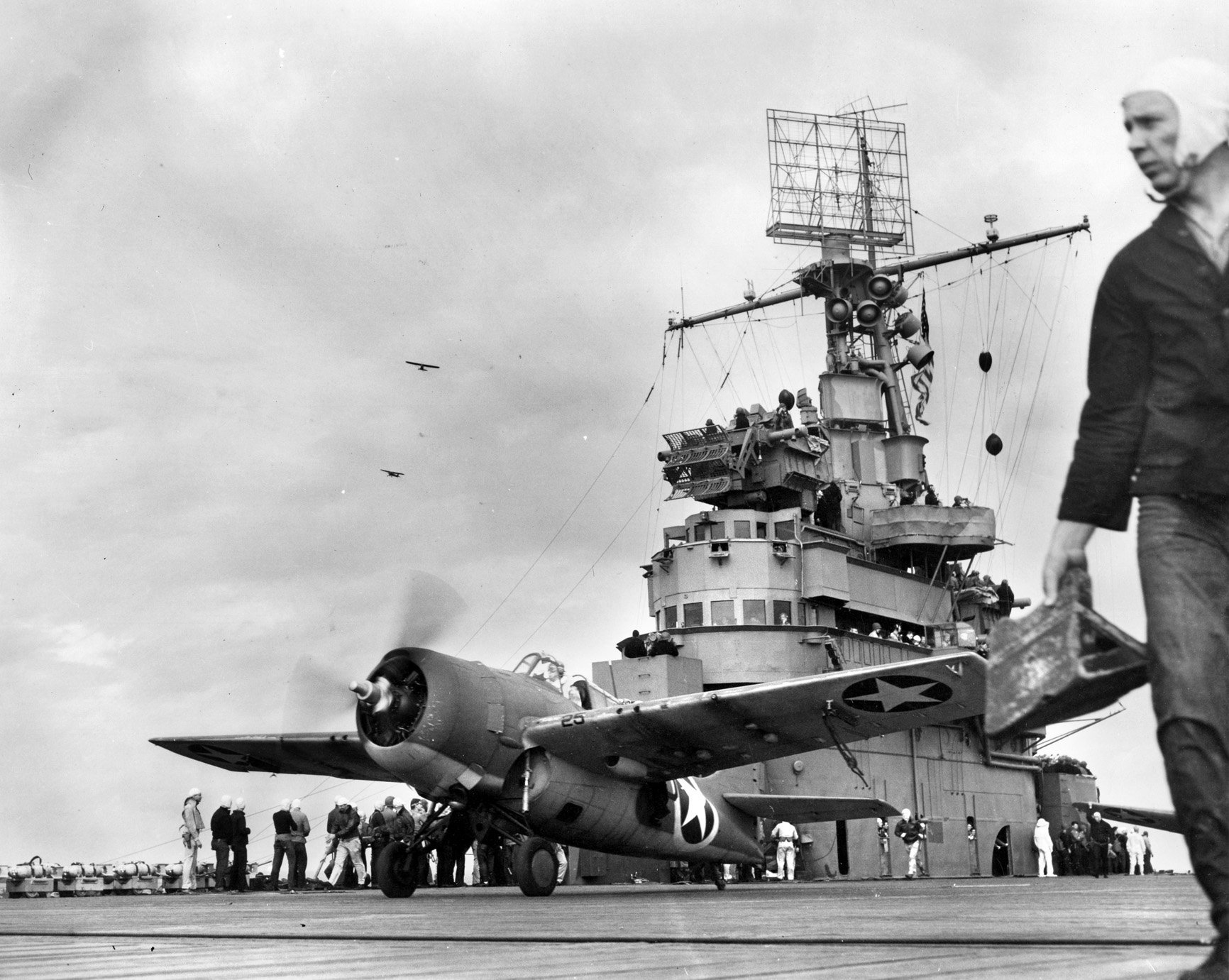
On the final day of the operation, dive bombers from Ranger struck the French battleship Jean Bart after its crew restored one of it gun turrets to operation. Two bomb hits knocked the hostile ship out of action for good. The French at Casablanca surrendered on November 11, and Ranger departed the next day for Norfolk, arriving November 23, 1942. After training in the Chesapeake Bay and a refit, Ranger carried yet another load of 75 P-40 fighters, this time back to Casablanca, in late February 1943.
The Ranger sailed for the British naval base at Scapa Flow in August 1943 for attachment to the Royal Navy. The British Home Fleet’s carrier force was understrength due to damaged ships under repair and widespread commitment of the remaining carriers. The cruisers Augusta and Tuscaloosa along with five destroyers accompanied Ranger to the United Kingdom. For this deployment, Ranger’s air group contained three squadrons, VF-4 with 27 Wildcats, VB-4 equipped with 27 Dauntless dive bombers, and VT-4 with 18 TBF Avenger torpedo bombers.
At the beginning of the war, the U.S. Navy matched each carrier’s air group number with that of the ship. Ranger’s ship number was CV-4, so assigned planes made up Carrier Air Group 4. The fast pace of operations meant air groups and squadrons became mixed later, but for the Ranger in the Atlantic, the numbering system remained accurate. Individual planes received designations based on this. For example, 4B11 referred to Air Group 4, Bombing Squadron, and aircraft number 11. The Dauntless was an older design but had served effectively in the Pacific while the Avengers were a newer aircraft. Outdated against the most modern fighters, the Wildcat could still be effective at strafing ships and attacking bombers or transport aircraft.
At the beginning of Ranger’s time attached to the Royal Navy, the British fleet maintained a significant force at Scapa Flow against the threat of Germany’s remaining large surface ships conducting a sortie into the North Atlantic. The Kriegsmarine based warships, such as the battleship Tirpitz and pocket battleship Scharnhorst in Norway, where they were protected in the steep-sided fjords of the Norwegian coast. These ships could cause great damage to convoys bound for England or the Soviet Union, so a large force of capital ships with carrier support had to stand ready to engage the German warships if they dared to emerge into open waters.
The situation changed after British midget submarines managed to penetrate the defenses around the battleship Tirpitz in mid-September 1943. Two of the submersibles planted large mines under the Tirpitz, causing extensive damage which put the ship out of action. Without their largest and most effective ship in the region, the threat of the other German ships mounting an offensive operation was effectively eliminated.
At that point, the Ranger could be spared to conduct offensive operations in the North Atlantic. The British Admiralty decided the time was ripe for a carrier strike against German targets in Norway. A successful raid could damage German-controlled coastal cargo traffic and impede the Nazi war effort by interdicting the flow of raw materials.
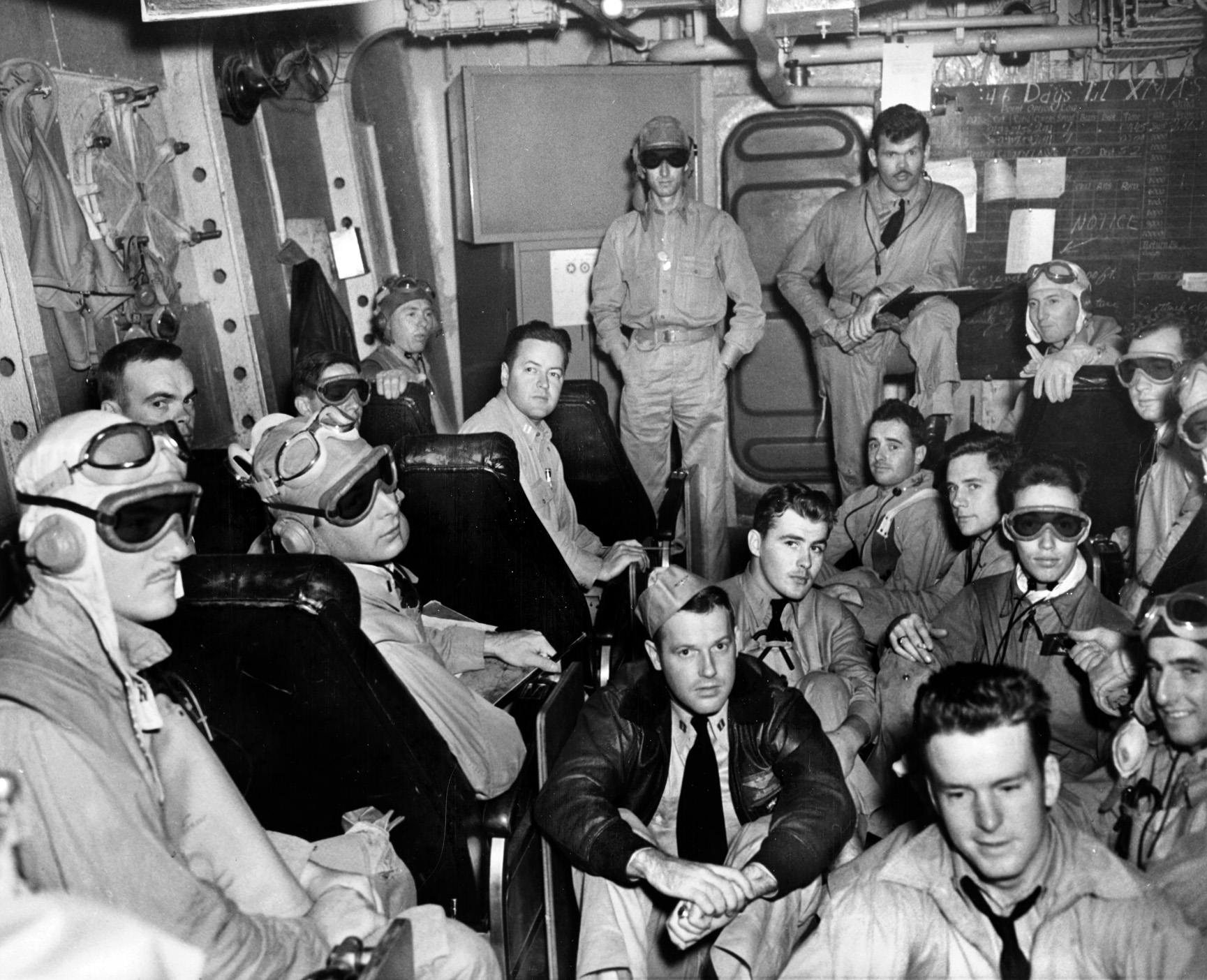
A plan soon came together with Ranger as the center of the group, designated Task Force 121. The British decided against using either of their two carriers. The HMS Furious was undergoing a refit and therefore unavailable, and the HMS Formidable’s torpedo bombers were deemed obsolete and thus unsuited for a strike.
The plan received the name Operation Leader, and TF-121 included Ranger, the heavy cruiser Tuscaloosa and six destroyers. Since 60 percent of Ranger’s aircrews had not yet seen action, a raid offered an opportunity to give them actual combat experience.
The crew of Ranger had another reason to get at the Germans. Late in April 1943, a German radio broadcast announced that the submarine U-404 sank an American carrier with four torpedoes. The U-Boat’s commanding officer, Lieutenant Otto von Bulow, was awarded the Oak Leaves to the Knight’s Cross for the feat. Aside from the indignity of being reported sunk by the enemy, some crewmen worried the report would reach loved ones who knew what ship their sailor was serving aboard and caused unwarranted sorrow. Hitting the Germans with an air raid would pay them back for their erroneous claims.
The task force sailed from Scapa Flow on October 2, 1943. Initially Ranger and her escorts moved in the direction of Iceland and then turned northeast to close with the Norwegian coast before launch. A covering force including the battleships HMS Duke of York and HMS Anson also left Scapa Flow in case any German surface ships responded to the raid. The plan targeted the area offshore of the town of Bodø, which was situated 100 miles north of the Arctic Circle, because it served as a meeting point for coastal shipping. The attack used two strike groups.
The Northern Group comprised 20 SBD Dauntless dive bombers escorted by eight F4F Wildcats, while the Southern Group used eight TBF Avenger torpedo bombers with six Wildcats in support. Each group had a Norwegian navigator in the lead plane to help them get to the target area and aid in distinguishing German-controlled shipping from Norwegian civilian craft. Norway was an ally, and the Allied attack force did not want to unnecessarily kill or wound any Norwegians.
The Northern Group would launch first. Both groups would fly toward the Myken Lighthouse, located on the small island of Jutoya 62 miles southwest of Bodø. Upon reaching that landmark, the Northern Group would turn north and head toward Bodø while the Southern Group flew south to find targets in the leads. In the event no enemy shipping could be attacked, the secondary target was German shore facilities around Bodø. The torpedo planes would carry bombs in case they had to hit land targets and because no one was sure how effective torpedoes would be in the shallow waters of the leads.
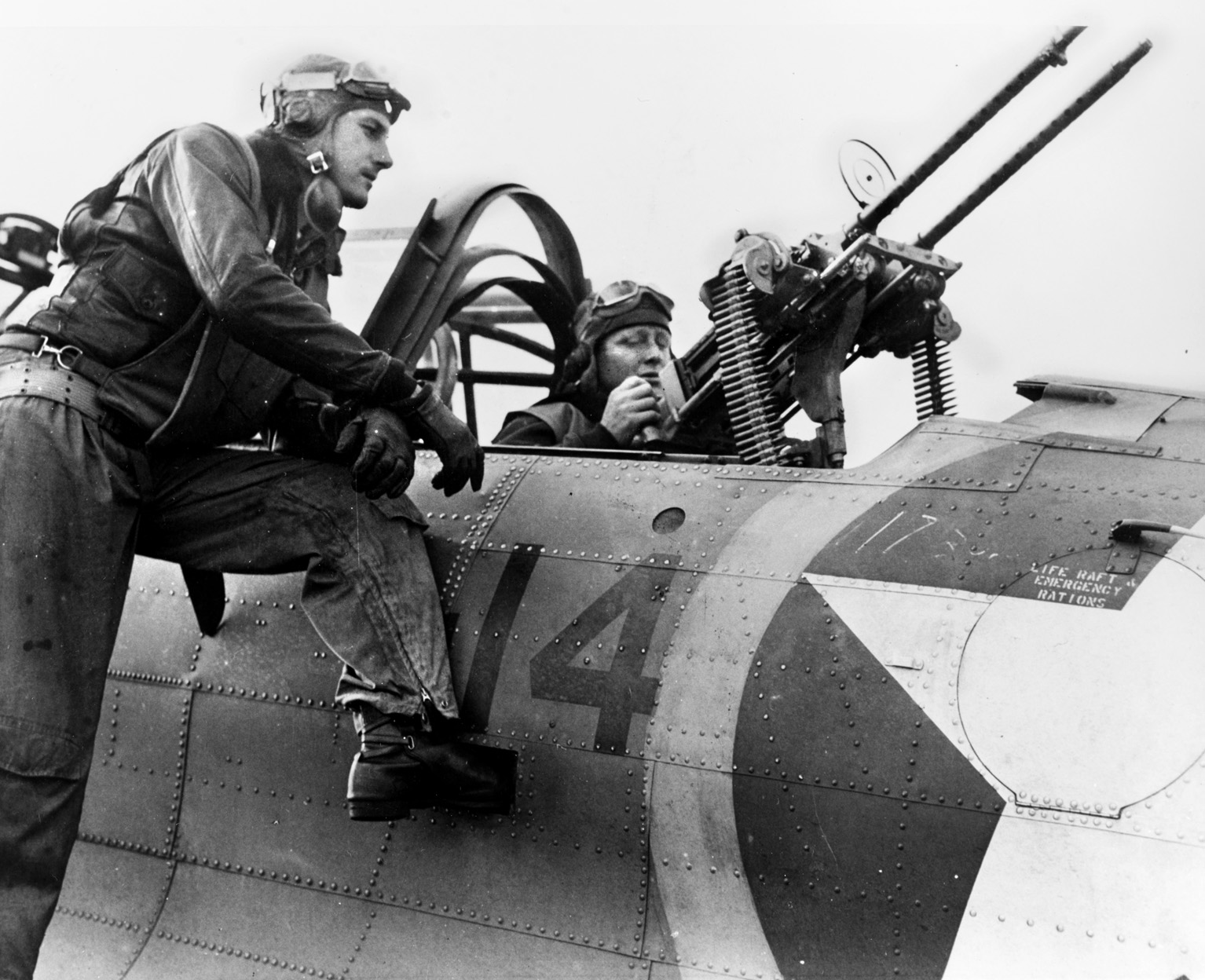
On the following day, October 3, the task force crossed the arctic circle. Ranger’s loudspeakers came to life with an important message to all personnel aboard. “The Ranger has just crossed the Arctic Circle,” stated the announcer. “The captain congratulates all those on board for attaining membership in the Bluenose Society. With Neptune’s permission and the blessings of Aurora Borealis, Bluenose certificates will be issued to all hands.”
On the evening of October 3, as the task force slowly neared the launch point, sailors loaded bombs and fueled aircraft while aircrews inspected their planes and studied maps. Those involved in carrying out the raid also studied tabletop models of the area around Bodø. As part of the mission requirements, each pilot had to be able to draw a map of the area from memory. Former Norwegian Air Force pilots provided descriptions of the area and the maps detailed intelligence about German defenses. Those involved passed around photographs of German ships likely to be encountered during the raid.
The aircrews arose from their bunks at 2:00 a.m. Many of the fliers put on heavy green wool sweaters donated by the Red Cross. Rumors circulated among the pilots these sweaters provided protection from flak shrapnel, though in reality they were more useful for keeping the fliers warm. At 4:30 a.m. the announcement “Flight Quarters” came over the loudspeaker and the aircrews reported to their Ready Rooms. Lieutenant Gerald Thomas, a new and untested pilot in Ranger’s Torpedo Squadron Four (VT-4), remembered his squadron commander, Lt. Cdr. D.W. Taylor, giving a briefing on the plan of action.
Taylor began by announcing their target area south of Bodø and then gave tactical details. Each Avenger carried four 500-pound bombs with armor piercing fuses set to a 10-second delay. Only command planes had VHF radios, and all other pilots were to maintain radio silence. The squadron would operate in sections of two planes each. When a section spotted a target, the leader would waggle their wings to get the attention of the escorting fighters flying above them.
Four fighters would then dive on the target and strafe it to reduce antiaircraft fire. Right behind the fighters, two following torpedo planes would drop their bombs at mast level over the enemy ships. The attack force would repeat this tactic for each ship they spotted, two Avengers at a time. The Carrier’s air group commander, Commander Joseph A. Ruddy, would fly one of the Avengers.
Lt. Cdr. Homer Hutcheson, executive officer of VT-4, originally had planned to keep Thomas off the mission due to seasickness, but at the last minute told him to pilot Four-Tare-Nine (4T9), the last plane on the flight deck. Thomas quickly copied Point Option Data, such as ship’s location, speed, wind direction, and velocity, onto his plotting board and strapped on his parachute harness. The harness fit poorly over the shoulder holster for his .38 revolver, and he feared he might break a rib if he had to bail out. He left the weapon in the ready room because he decided that if he went down over enemy territory it would be of little use to him.
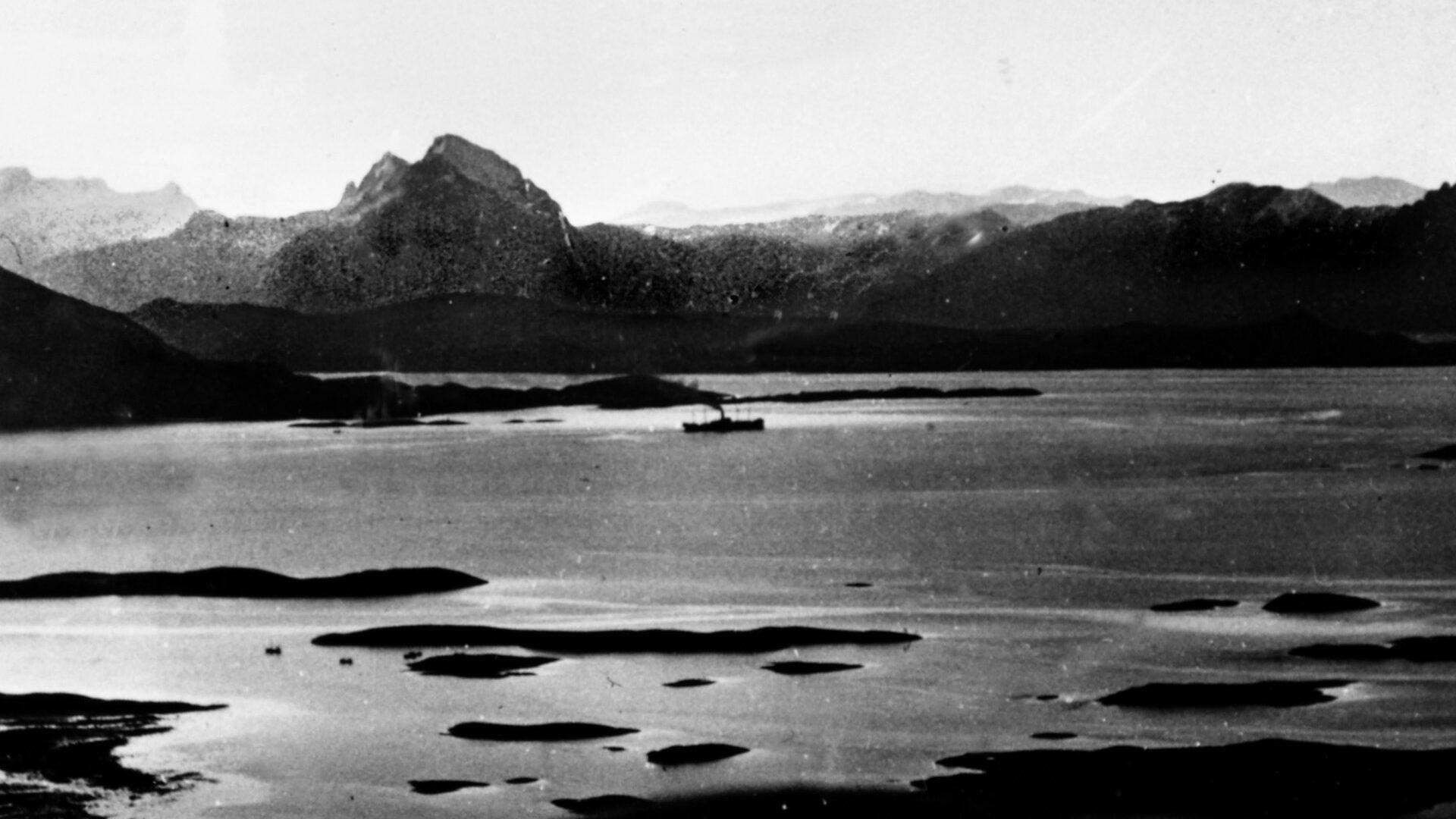
After the Northern Group took off, the pilots of the Southern Group received orders to man their planes. Thomas rushed off without time to recalculate the ship’s position, but at least the freezing wind on the flight deck helped with his seasickness. He climbed into the cockpit of his plane and the plane captain helped him strap in and went over the ordnance data for his bombload. Soon he started his engine; it sounded good as he prepared to take off. Minutes later the launching officer dropped his signal flag and the Avenger rushed down the flight deck and into the air. Once all planes were airborne, the Southern Group formed up and flew east, 50 minutes behind the first wave.
The Northern Group under Lt. Cdr. Klinsmann arrived at the Myken Lighthouse at 08:20 a.m., skimming across the early morning waves toward the beacon. The aircraft rose to 1,500 feet and turned north toward Bodø, with one group of dive bombers and fighters breaking off to search a nearby lead. In the distance they spied the snow-covered mountain peaks on the Norwegian coast. The aircrews had clear skies and good visibility along the coast for their respective missions. No German fighters arose to challenge the Americans. It appeared to the American aircrews that they had succeeded in surprising the Germans.
The pilots of the group that broke off soon found the first target of the day at 08:24 a.m. Below them on the tranquil morning waters of the lead sailed the 8,000-ton German freighter La Plata. Immediately the fighters and one Dauntless dove on the enemy ship, strafing it over and over to clear its decks of antiaircraft gunners so the dive bombers could make their runs.
Two Dauntlesses soon dove on the fleeing German ship, dropping their bombs as they soared over the ship’s hull. One of the pilots, Lieutenant (jg) Prince H. Gordon, dropped his ordnance just 60 feet above the ship. “I went in very close, so close, in fact, I had to pull up severely to miss the foremast,” he said afterward. Three bombs hit the La Plata; soon she was on fire and listing, obviously badly damaged. The American flight commander decided to save his group’s remaining bombs for other targets, so they flew north to find their fellow fliers. La Plata’s crew chose to beach their burning ship to save her from sinking.
While the detachment made its run on La Plata, the rest of the attack group flew north toward Bodø. Soon they found a quartet of Norwegian craft sailing through a lead. The Norwegian officer flying with the Americans waved the planes off because the vessels were friendly; however, shortly afterward they spotted three more ships sailing in a small convoy. The freighter Kerkplein and the large tanker Schleswig had an escort, which different sources report as a German minesweeper or a former Norwegian Sleipner-class destroyer in use by the Germans. A pair of dive bombers attacked Kerkplein, while eight others went after the Schleswig.
The fighters strafed all three ships several times, though the antiaircraft fire proved heavy. One American plane took damage and had to return to the Ranger. All the ships took damage, and like the La Plata earlier, the Schleswig had to beach to prevent sinking. A later German report stated three bombs struck the hapless tanker. The ship was later refloated, however, and taken to Bodø for repairs. The Kerkplein took a pair of bomb hits and caught fire. The ship carried 1,551 Soviet prisoners of war; of that number, 14 died, 29 were wounded, and nine missing. It was a tragic situation because the ship bore no marking to identify it as a prisoner-of-war transport vessel.
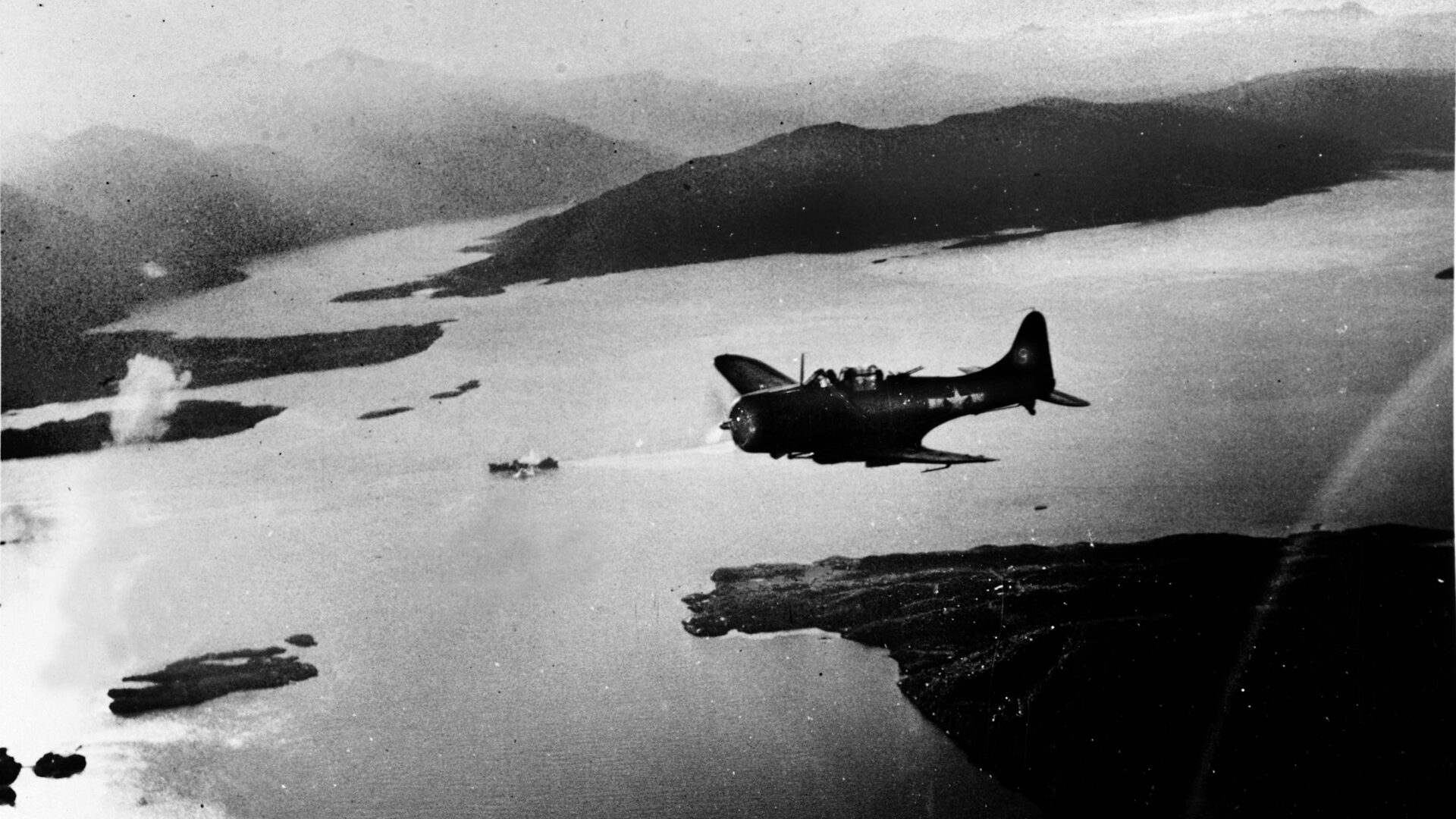
Klinsmann sent some of his planes to the rendezvous point since they had expended all their ordnance. With so many of the aircrews lacking combat experience, leaders noticed the new pilot’s tendency to place too much machine gun fire on the first target they engaged. The rest of the attack group flew on to Bodø harbor, where they found four German cargo ships. Eight Dauntlesses dove on the hapless ships, strafing and dropping their remaining bombs. One freighter sank while another suffered damage from a bomb which struck under the waterline. A bomb struck the third cargo ship but failed to detonate, while the fourth took no bomb hits but had some minor damage from the strafing.
The German response proved scattered. Both Wehrmacht and Kriegsmarine units stationed around Bodø shared a single radio channel. When the Americans attacked, the German army troops got onto the radio first, clogging it with so much traffic the navy was unable to warn nearby ships and outposts of the danger. A German report on the battle mentioned coding errors. The radio was “constantly noisy with interruptions,” stated the report. For a time, confusion reigned in the German response; the Americans had achieved surprise.
Despite this, German anti-aircraft gun crews got into action quickly and scored hits on several Dauntlesses. Lieutenant C.V. Johnson’s 4B11 took a hit to the starboard wing but kept flying. Aircraft 4B23, flown by Lieutenant R.W. Phillips, took a 40mm explosive cannon round, which damaged its right stabilizer and put a hole in its rudder. Another hit on his port wing clipped the fuel tank but did not penetrate it.
Three 20mm shells struck Lieutenant L.M. Boykin’s 4B13, but the plane flew on with no apparent effect. Lieutenant G.C. Simmons flew 4B27, took a 40mm round in the radio compartment behind the rear gunner, which also severed his right rudder cable. The Dauntless was a tough aircraft, and those particular aircraft stayed aloft and returned to the Ranger.
Unfortunately, even a rugged plane cannot fly if it is severely damaged. Other SBD aircrews were not so fortunate. The plane crewed by Lieutenant Clyde A. Tucker and Airman 2nd Class Stephen D. Bakran took a hit near the starboard wing root as they flew only 200 feet over the water. The Dauntless caught fire and went down at a 30-degree angle into the water and exploded, killing both American aviators.
A second SBD Dauntless crewed by Lieutenant (jg) Sumner R. Davis and Airman 2nd Class Donald W. McCarley took a hit to its engine. Davis tried to pilot the plane back to the Ranger but had to make a water landing 12 miles west of Bodø. The rest of the attack group was returning to Ranger at this time and saw the two men launch a life raft and signal that they were all right. The Germans later found both men and took them prisoner.
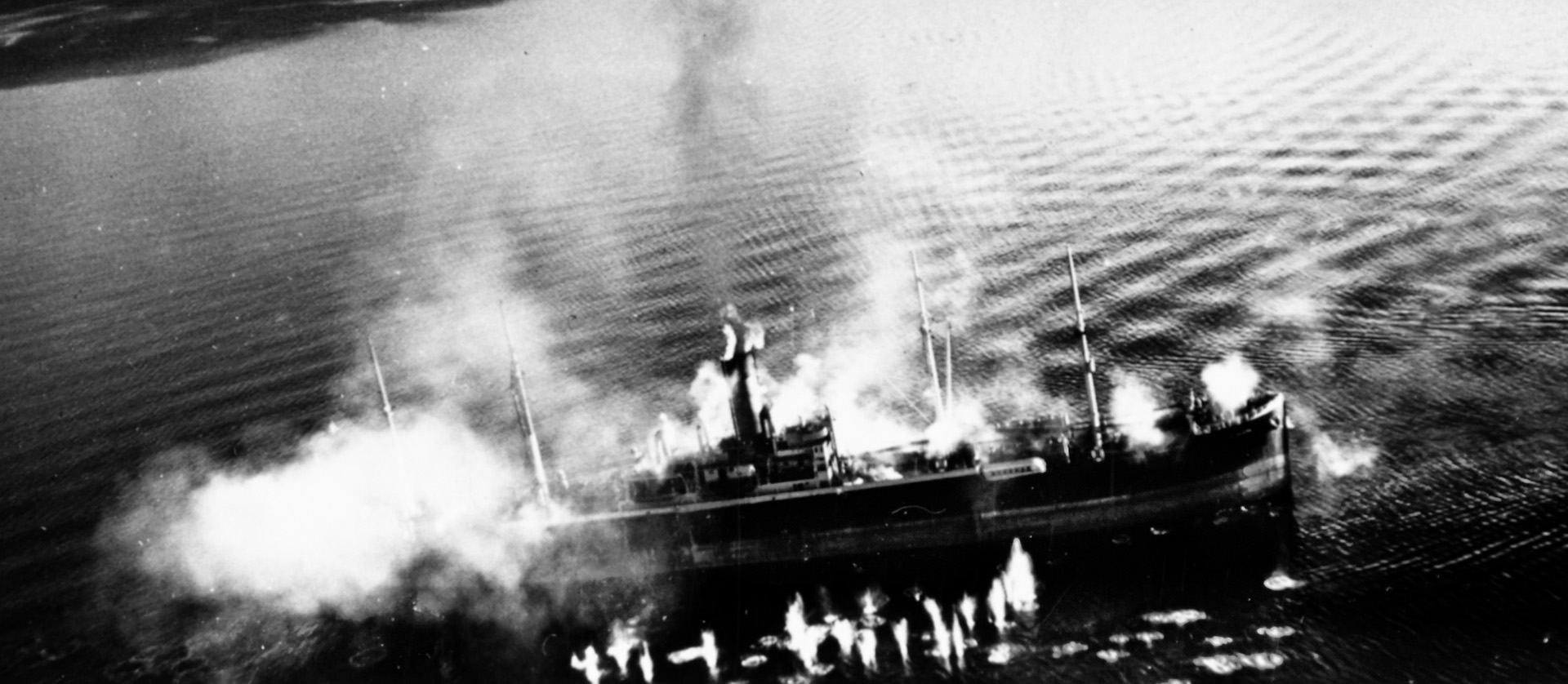
The Northern Attack Group achieved considerable success before it turned west toward its carrier. The Southern Attack Group of Avenger Torpedo Bombers and the Wildcat fighters took their turn, arriving about 50 minutes after the first wave. They reached the coast near Sandnessjoen, 100 miles south of Bodø, just as the morning sun appeared over the rocky peaks of the coastal mountains. The group ascended to 1,500 feet as Commander Ruddy led his force north along the coast, searching for targets. It took only a few minutes to find one.
Sailing through the placid waters below the attack group, the Topeka was a German-controlled merchant ship with Norwegian crewmen aboard. Taylor, the torpedo squadron commander, wagged his wings, signaling the fighters to begin their strafing runs. A pair of Avengers followed the Wildcats. The aircraft flew so low they were level with the ship’s mast. Antiaircraft fire from both the ship and shore batteries along the coast met them, but the planes completed their runs and rejoined the group. Several bombs hit the Topeka and set her afire, forcing the crew to beach the ship, which kept burning until it was a smoking ruin.
Lieutenant Gerald Thomas watched the attack on the Topeka and saw his fellow flyers rejoin the group and fly north toward Bodø. Suddenly, just in front of him, the torpedo plane flown by Lieutenant (jg) John Palmer burst into flame and began spiraling toward the water. Squadron Commander Taylor broke radio silence and implored the crew to bail out, but only one parachute was spotted. The Avenger crashed into the sea. Palmer made it out, but both his turret gunner and radioman/bombardier/ventral gunner died.
“I must have caught a shell right through the back of the plane,” Palmer recalled. “It went right under me and into the engine, because it caught fire. I think it must have killed Zalom and Miller.” As more flak burst around the American formation, Thomas tried to make himself as small as possible, trying to center himself on the armor plating under his cockpit.
The Southern Attack Group continued north and soon spotted the La Plata and its escort. A quick attack run scored two more hits on the hapless freighter. Continuing north to Bodø, the group soon found more targets. As Thomas flew along, he noticed his section leader, Lieutenant (jg) Burt Trexler, wagging his wings, indicating their section was next to attack. Thomas watched a ship he thought was a tanker moving through the water below and soon got the order to attack it. The ship was a barge carrying 40 tons of ammunition. By the time the order came through, Trexler and Thomas were almost directly over the vessel, which meant they had to practically dive on their target rather than do a glide-bombing attack more appropriate to a torpedo bomber.
As the two planes dove, Thomas realized he had gotten too far behind Trexler and would be caught in the leading plane’s bomb blast. He rolled his plane and pushed into the dive to shorten the distance. As he rolled, Thomas lost sight of Trexler behind his plane’s wing. When he corrected, the plane was not there. He later learned Trexler pulled out of the dive because it was too steep for a torpedo plane and the escorting fighters had not gotten the signal to strafe in time. As Thomas struggled to maintain his dive, he also hurriedly armed his bombs, opened his bomb bay and readied his guns to strafe.
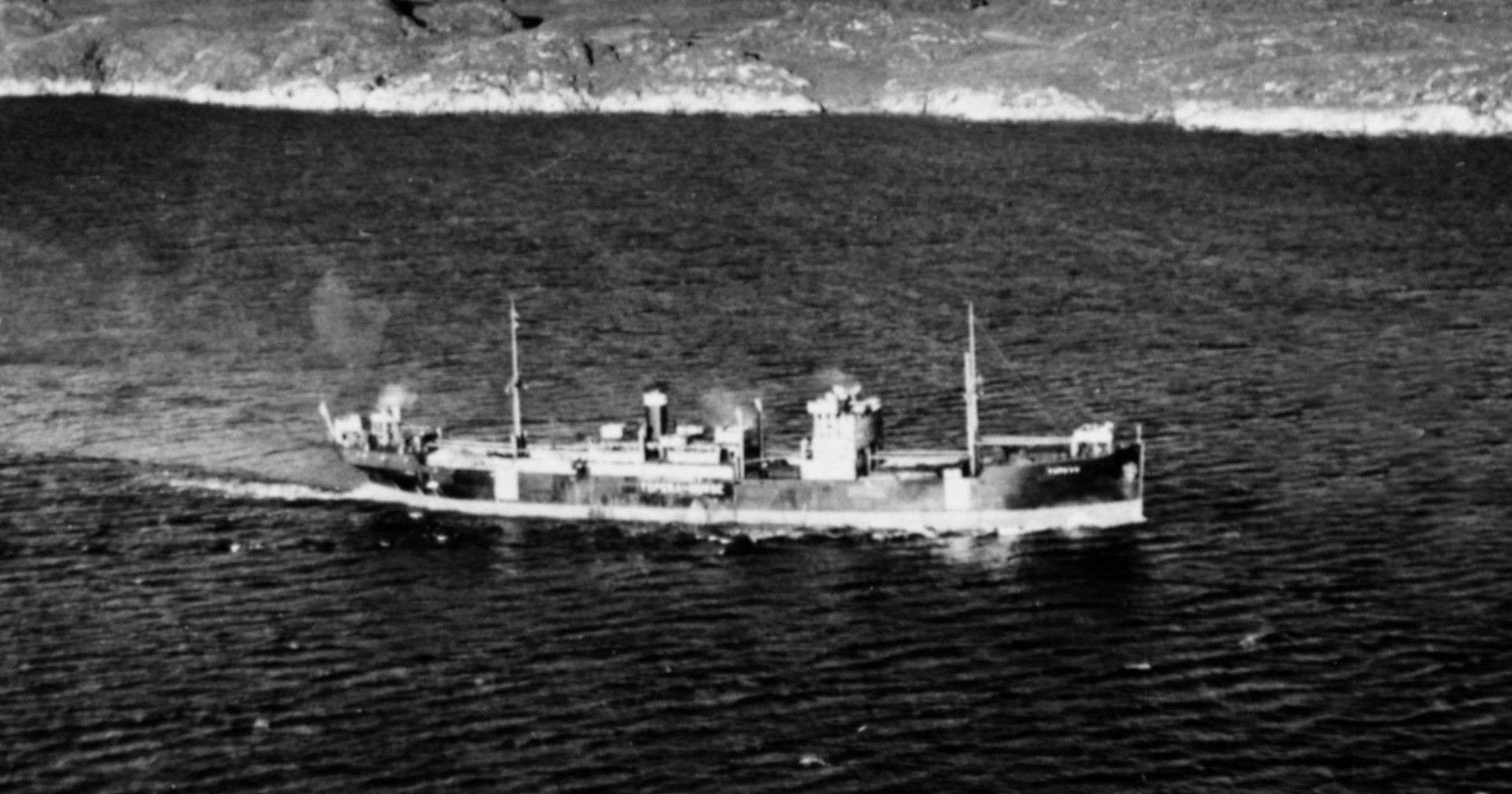
“I fired a couple of bursts from the machine guns, pushed the pickle [the bomb release control], and dropped two 500-pounders,” he wrote. “The plane came out of its dive just above the water. Because of the steep dive, I could not hold the nose on target, so the two bombs straddled the bow of the ship—at least 50 feet too far forward splashing water on the deck of the ship.”
At that point, two bombs remained in the bomb bay. Thomas, who by that time was flying 50 feet above the water, started to prepare for another run. He began to climb near a small rocky island when someone yelled a warning over the radio. “Watch that shore battery!” the person shouted.
Thomas had not seen a gun emplacement close by and it peppered his wings with bullets, but the plane kept going. Thomas lined up for his run and went to full throttle; despite that, his aircraft felt agonizingly slow as tracer bullets from three different guns on the ship flew past his plane. One of his bombs struck the ship, which burst into flames.
He did not think to fire his guns in return. Just as he pressed the bomb release button, the engine took a direct hit. There was a flash of fire and smoke filled the cockpit. Thomas’ turret gunner, a man named Garner, shouted they were on fire. “I hauled back on the stick to gain altitude and shouted over the intercom, ‘Bail Out!’” recalled Thomas. He opened his cockpit at 800 feet, released his safety belt, and started climbing out of the plane. Yet he had forgotten to disconnect his radio cord, and as a result heard Garner shouting a warning to him.
“Don’t jump!” shouted Garner. Jackson, the third member of the aircraft’s crew, had accidentally pulled his rip cord inside the plane, which opened his parachute inside the aircraft, and he could not get out the escape hatch.
Thomas got back into the cockpit and started looking for a place to land. He decided on a water landing, trying to put down near one of the small islands; however, he realized that the German were concentrating antiaircraft fire on his plane, so he chose to get farther out to sea. As Thomas gained altitude, he realized there were no red warning lights on his instruments, everything read normal.
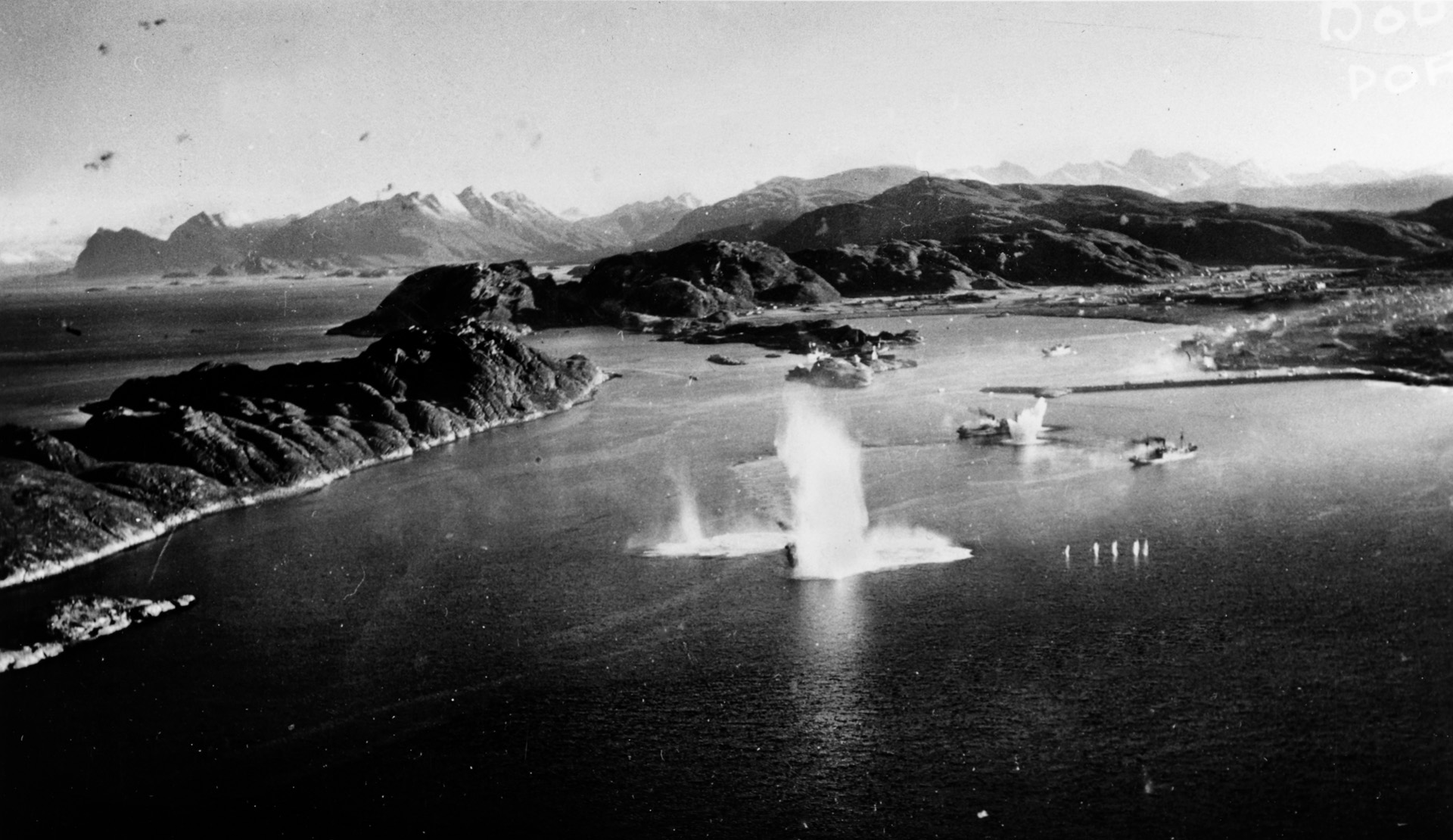
Thomas had to make a difficult decision. He knew Ranger was 100 miles away and the crew could only survive 15-20 minutes in the cold waters of the North Atlantic. Sweden, a neutral country, was just 90 miles away; therefore Thomas decided to head for internment in Sweden. He climbed to 5,000 feet and headed toward the imposing shapes of the mountains.
A new problem arose. His squadron mates had managed to sink two more enemy ships, the liner Vaagen and the troopship Skramstad, and damage several others. Now they were returning to Ranger, leaving Thomas’s Avenger the sole American plane in the sky. German fire concentrated on them. At that moment, Thomas changed his mind, and he decided that they would try to reach the carrier.
Using his plotting board, Thomas calculated the heading and luckily soon spotted some Avengers heading west. A fellow pilot flew around Thomas’s plane and gave him a thumbs-up, so he kept going, watching and listening for any change in the engine. Oil soon covered his canopy, so he could barely see. The plane’s oil pressure began to gradually drop.
They soon reached the carrier and Thomas went straight for it. His oil pressure was almost gone now. At the last minute, he spotted the landing officer waving him off. He went over the carrier almost crosswise to the deck and turned for another pass. This time he couldn’t see the landing signal officer, but he could see Ranger’s island, so he put it where he thought it would line him up on the flight deck. His plane’s tail hook caught a wire just as it hit the crash barrier. The wing clipped the island. All three men jumped out of the plane as deck crew sprayed it down.
The flight deck officer grabbed him and berated him. “You son of a bitch!” he shouted. “You landed on a wave off and fouled up the flight deck. Now how am I going to get the other planes aboard?” It was only the pilot’s 13th carrier landing.
Thomas went down to the squadron’s ready room, wondering if he was going to be court martialed. He told his story, but no one knew if he would be in trouble for landing. A few minutes later, he learned the deck was cleared and the other planes were landing. Instead of a court martial, he later received an air medal for hitting his target and getting his crew back to his carrier with a crippled plane. The rest of the attack group made it back safely, although one fighter pilot was wounded by German fire and made a hard landing which collapsed his landing gear.
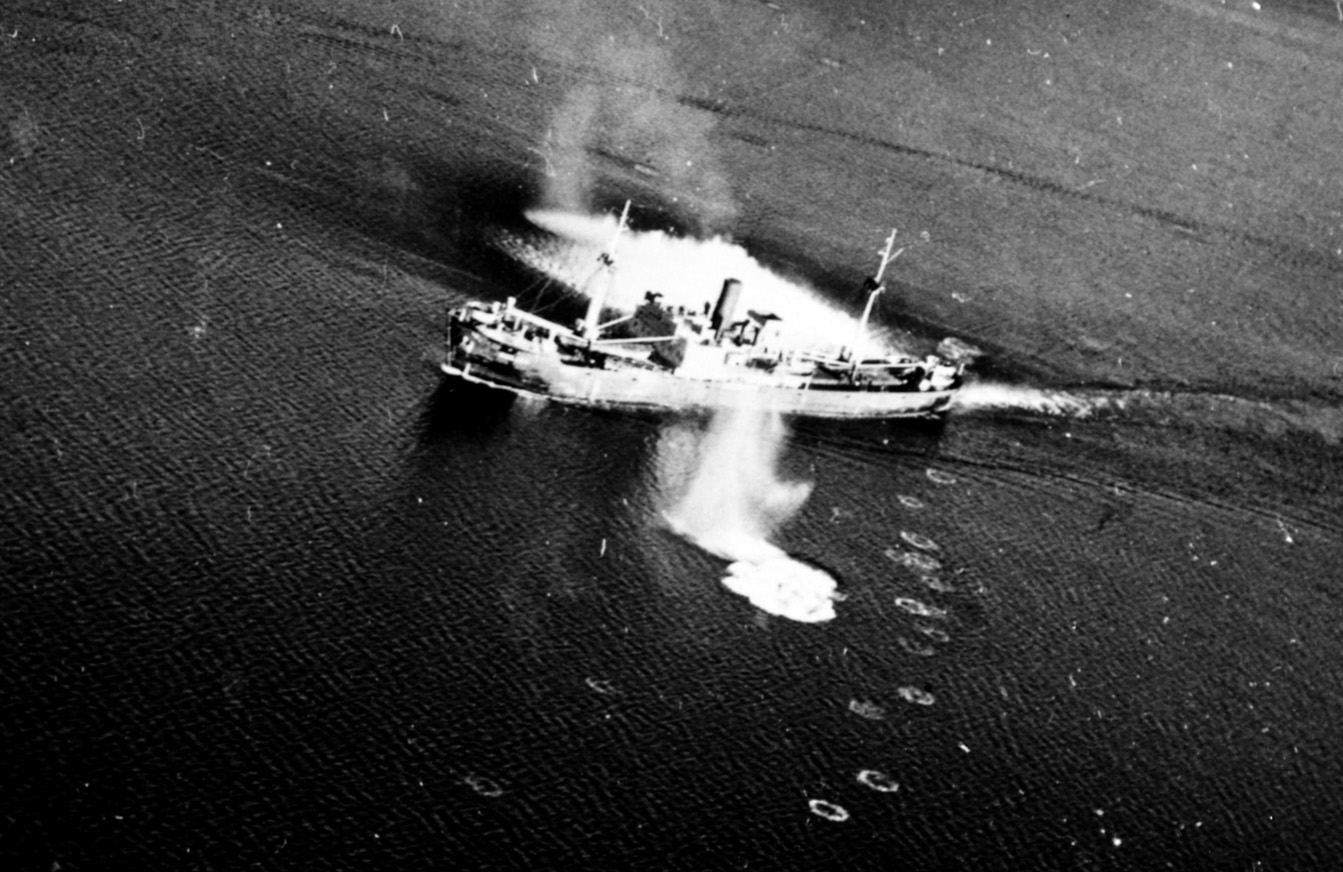
Despite the return of both strike groups, the fighting was not over. At 2:00 p.m. the Ranger’s radar detected three German aircraft approaching the task force. The carrier had a combat air patrol of four Wildcats in the air and directed them toward the radar contacts. One pair of Wildcats played cat and mouse with the German plane in the clouds but could not spot it.
Ordered back to the ship, Lieutenant Dean “Diz” Laird kept looking back, hoping to spot the enemy plane. “I spotted this German bomber about eight or ten miles back coming out from behind a cloud,” he recalled. “It was a Junkers 88. I hollered ‘Tallyho!’ and turned back. My leader joined me. The German saw us and immediately turned to the right and headed away. I was behind the German and shooting like hell, but I couldn’t tell whether I was getting any hits or not.”
After each pilot made a pass, the Ju-88 started smoking. Laird’s flight leader, Lieutenant Boyd Mayhew, had to break off from his second pass so Laird moved in. “I was about two-thirds of the way through my run when the bomber exploded in a huge ball of fire and a bunch of little pieces flew off.”
Before they could return to the Ranger, the combat air patrol was directed toward another radar contact. Flying through a heavy rain squall, Laird lost sight of his fellow American but spotted a German HE-115B twin-engined, three-seat floatplane. He turned toward the German and opened fire. Pieces of the floatplane’s left pontoon flew off.
By the time Laird came around for another pass, he was 1,000 yards behind the enemy aircraft. In an ideal situation, the optimum range for a stern attack was 300 yards. Laird calculated that his .50-caliber bullets would drop about 25 feet in 1,000 yards, so he ascended that distance and fired.
He appeared to have scored some hits on the target because the HE-115B began descending toward the water in what appeared to be an attempt to land on its surface. When the plane touched the water’s surface, though, the damaged pontoon collapsed. The plane did a cart wheel and broke apart.
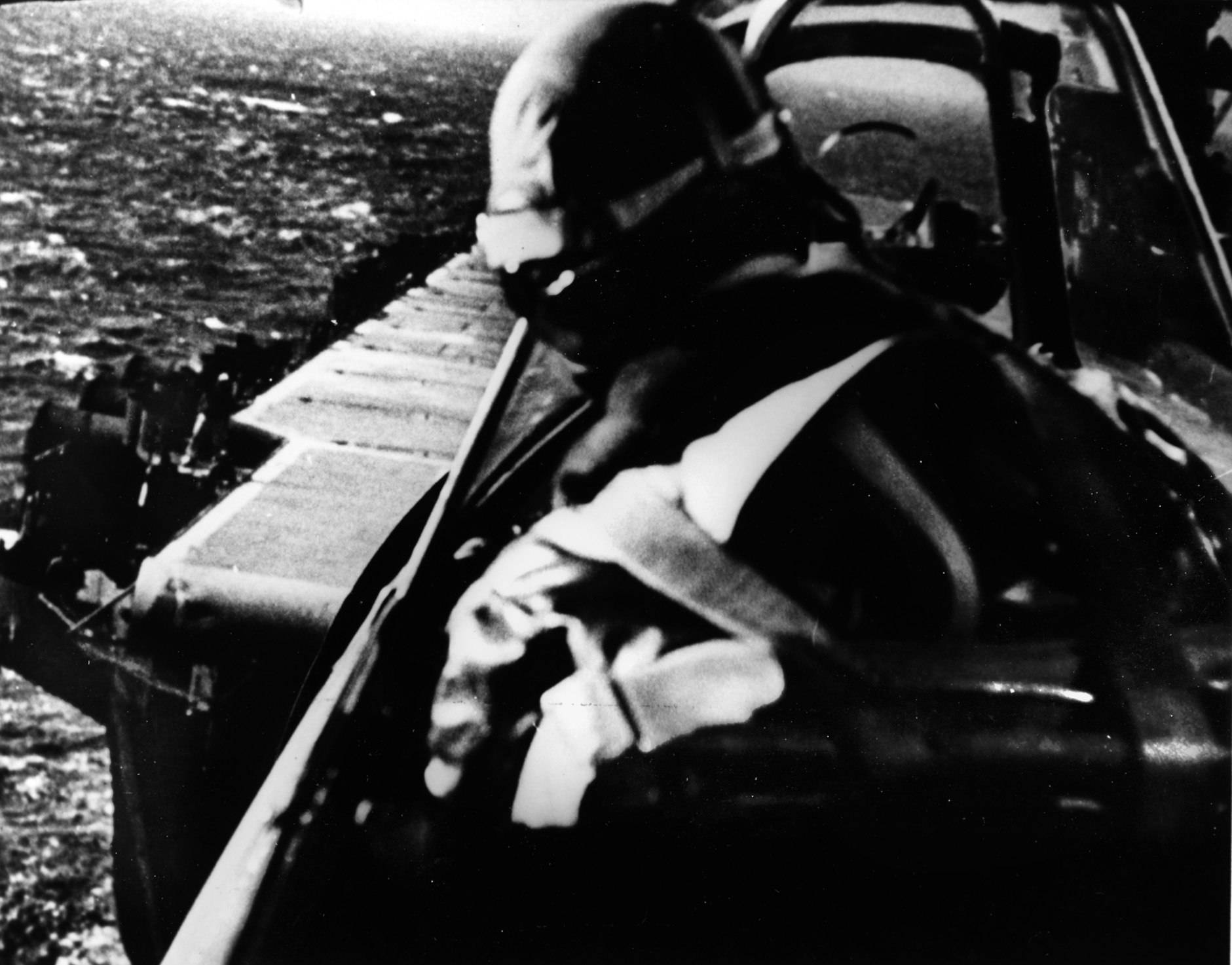
Having observed the carnage, Laird returned to Ranger as the task force withdrew west. One fighter pilot on combat air patrol landed off center and ditched his plane into the sea. Luckily for that pilot, the British destroyer Scourge managed to pick him up.
The task force returned to Scapa Flow, where its members were congratulated for a successful raid. The operation was “an excellent training exercise for CAG-4,” said Commander Ruddy. “We went in as many boys and came out as many men.”
The raid severely disrupted the shipment of iron ore from northern Norway for several months. In late November, Ranger sailed for the United States. After one more mission ferrying fighters to Casablanca, Morocco, the ship spent the rest of the war in the Pacific on training duty, preparing new carrier pilots for service with the newer and faster fleet carriers. Its pilots went on to serve in combat throughout the Pacific for the remainder of the war. For its service in North Africa and its successful air strike in the Bodø, Norway, the Ranger received two battle stars.
The wreckage of the downed Avenger was found in 1987 in the waters off Bodø by Steinborn Mentzoni, a Norwegian who had watched the raid unfold as a nine-year-old boy. Divers recovered the remains of both deceased airmen. A blade from its propeller is now housed in the National Naval Aviation Museum in Pensacola, Florida. Searchers also located one of the two lost Dauntless dive bombers in 1990 and recovered the crew’s remains.
The Norwegians erected a monument in 1987 in Fagervika, Norway, to honor the valor of the U.S. airmen lost during the raid. A propeller from Palmer’s Avenger torpedo bomber adorns the memorial. The monument looks out over the icy waters of the Leads where the U.S. Navy delivered an important blow to the German war effort.
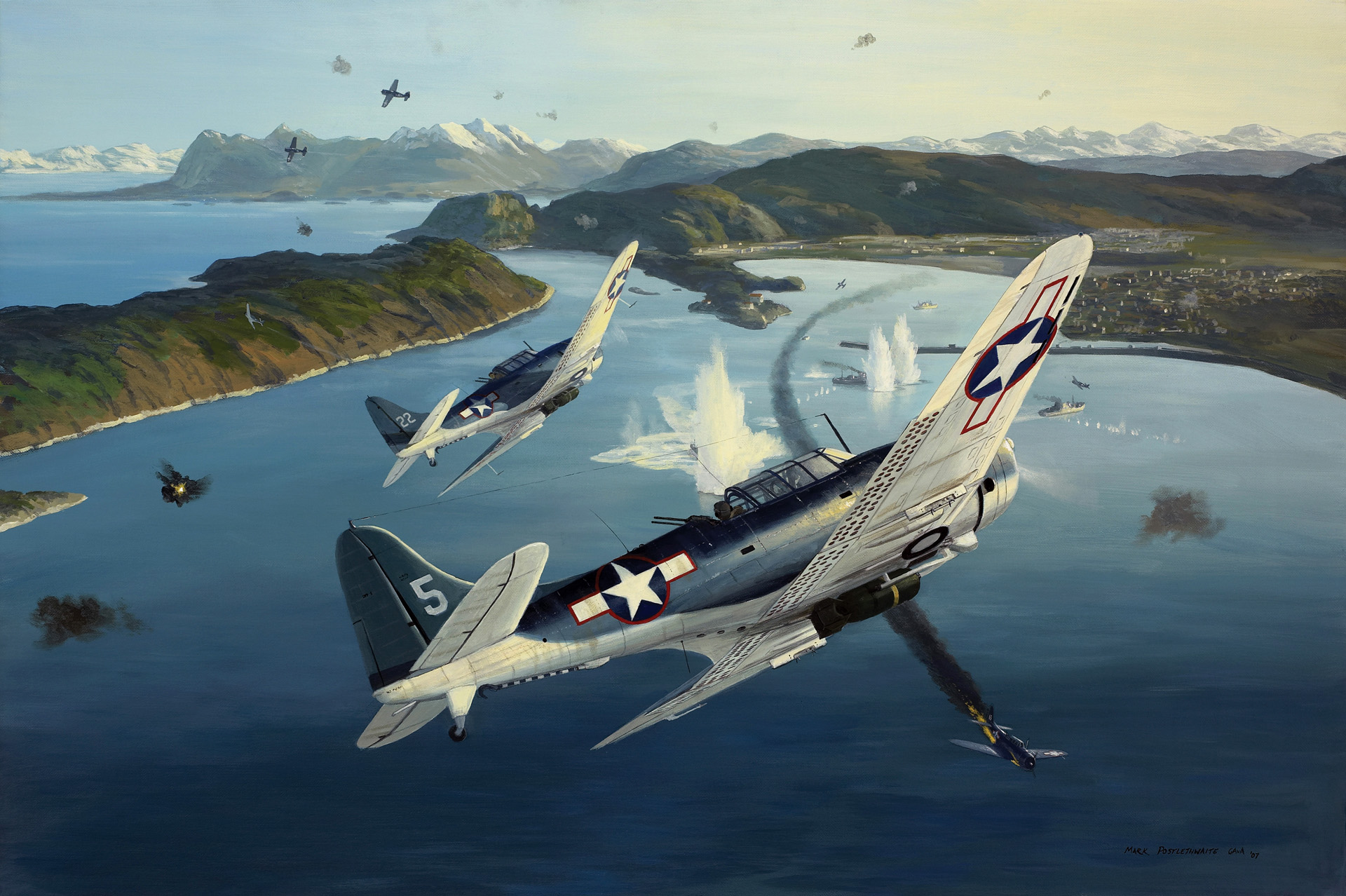
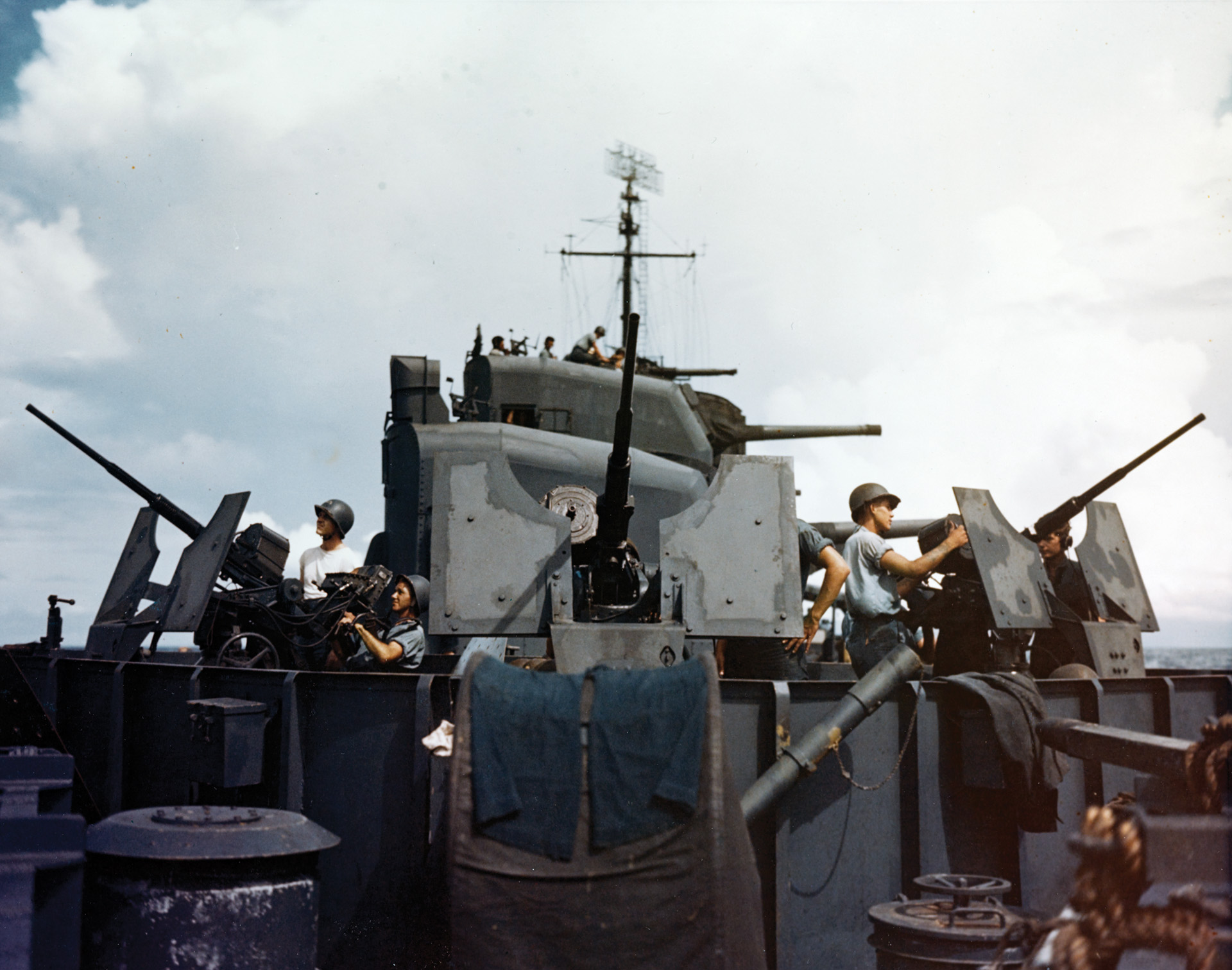
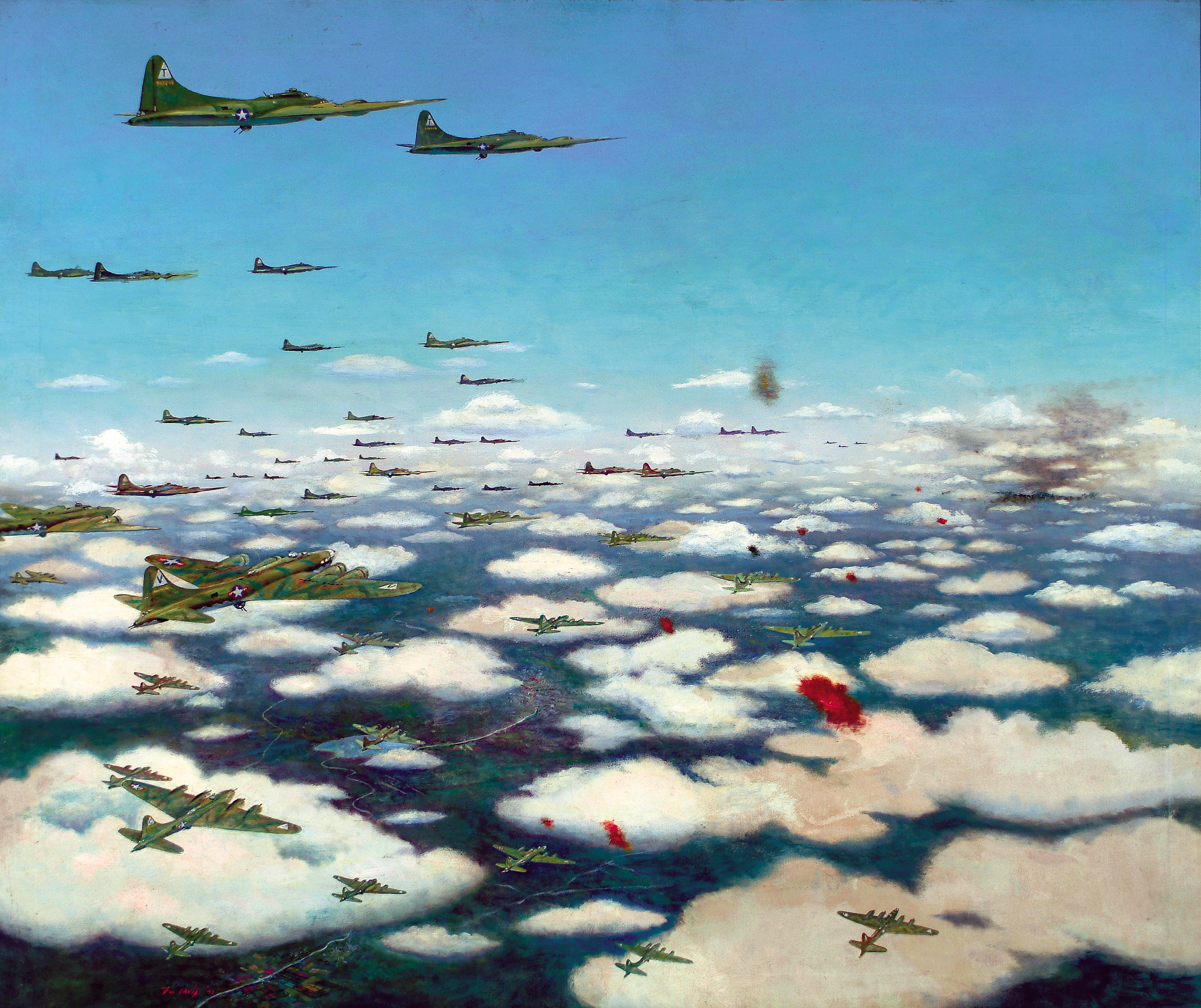
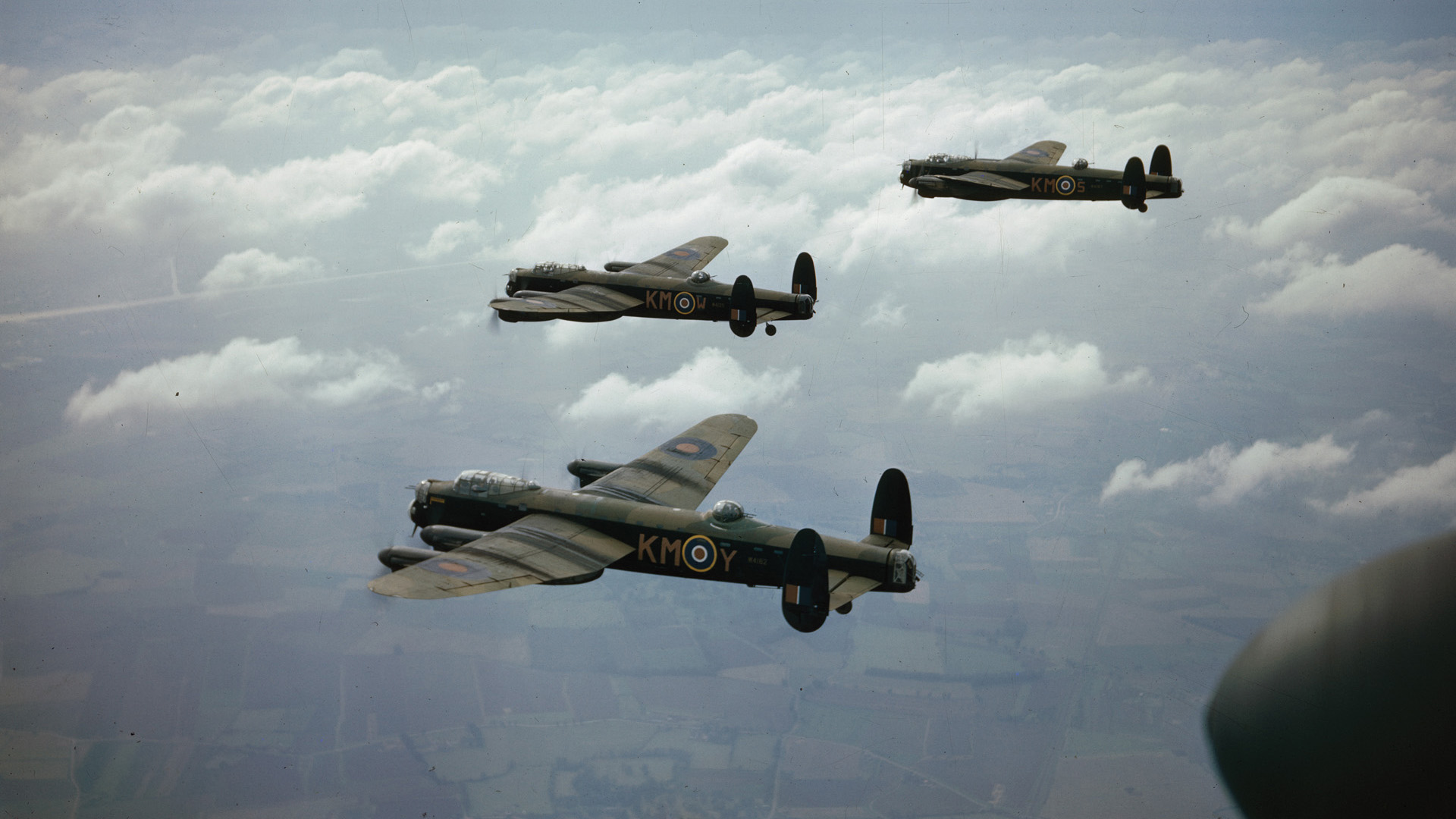
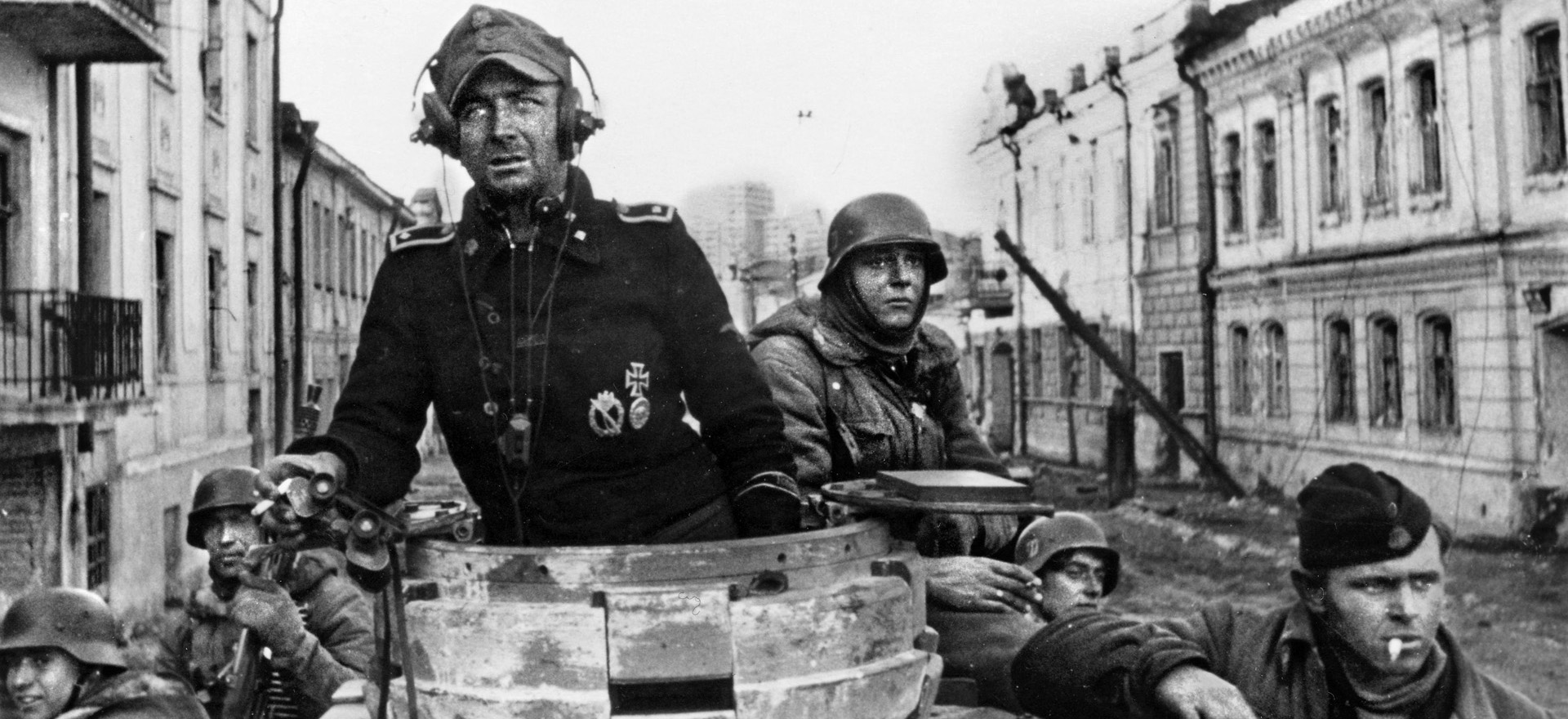
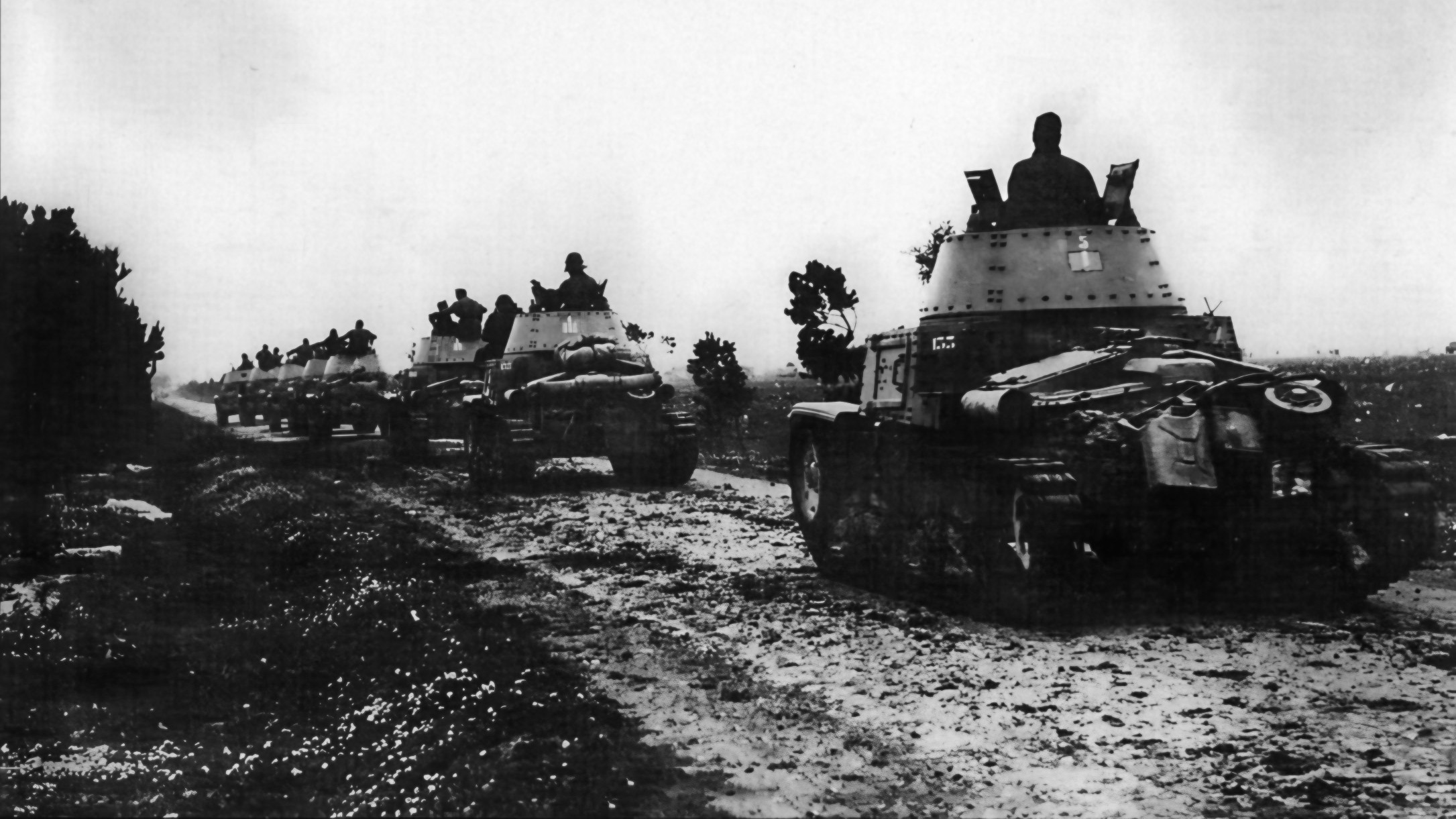
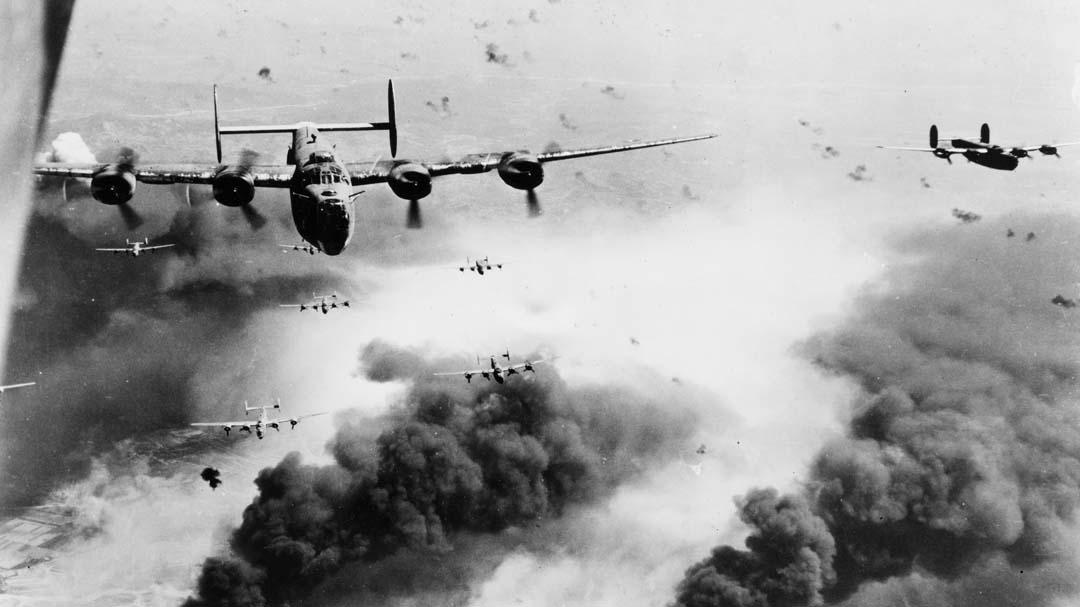
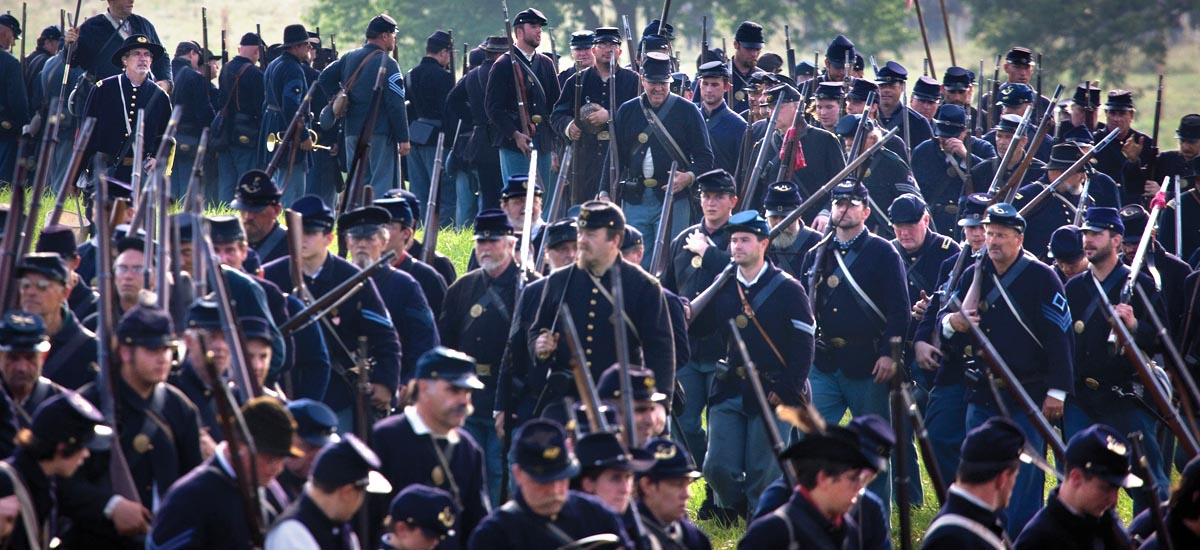
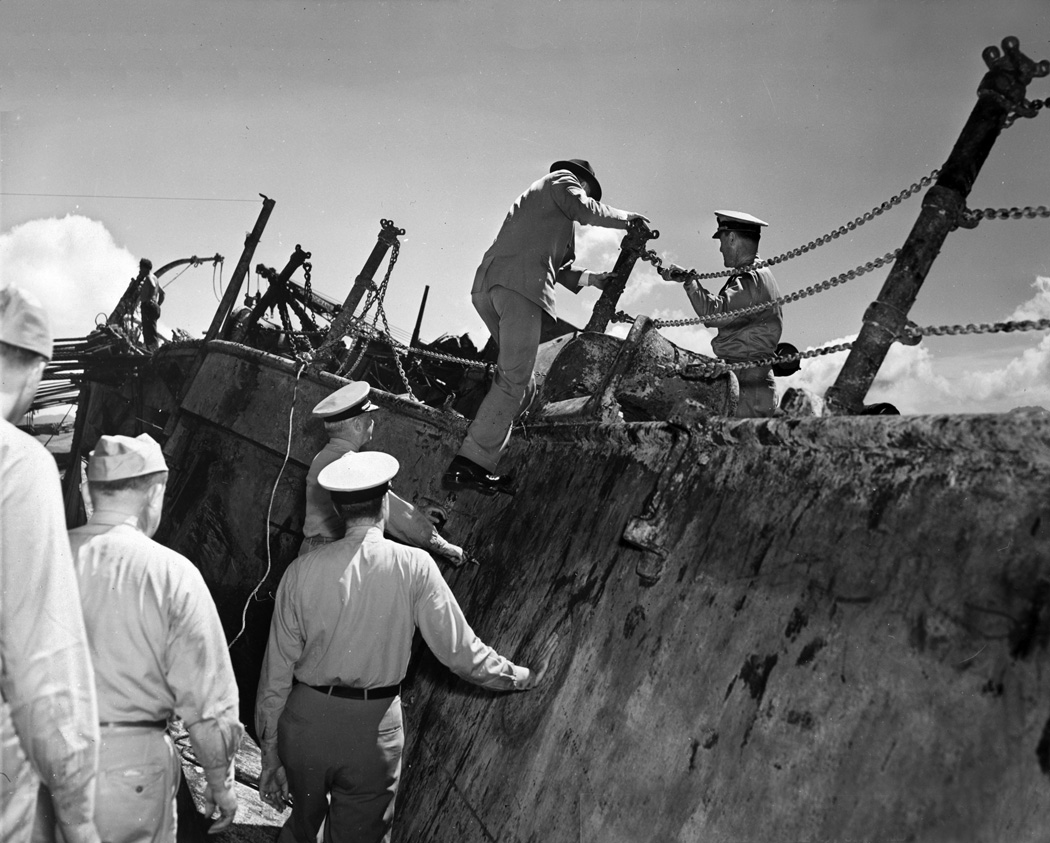
Join The Conversation
Comments
View All Comments